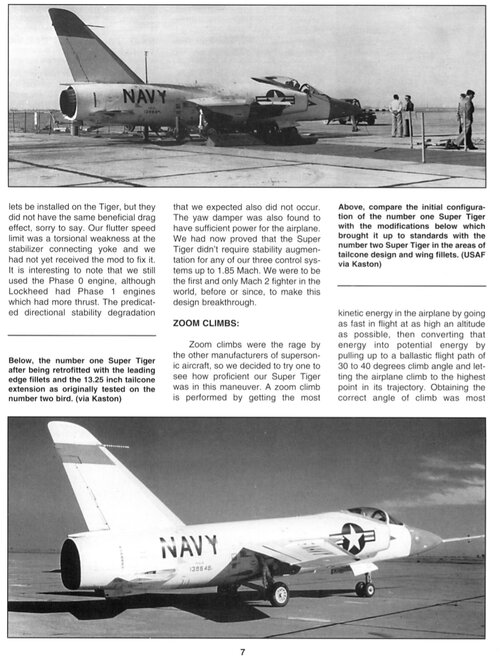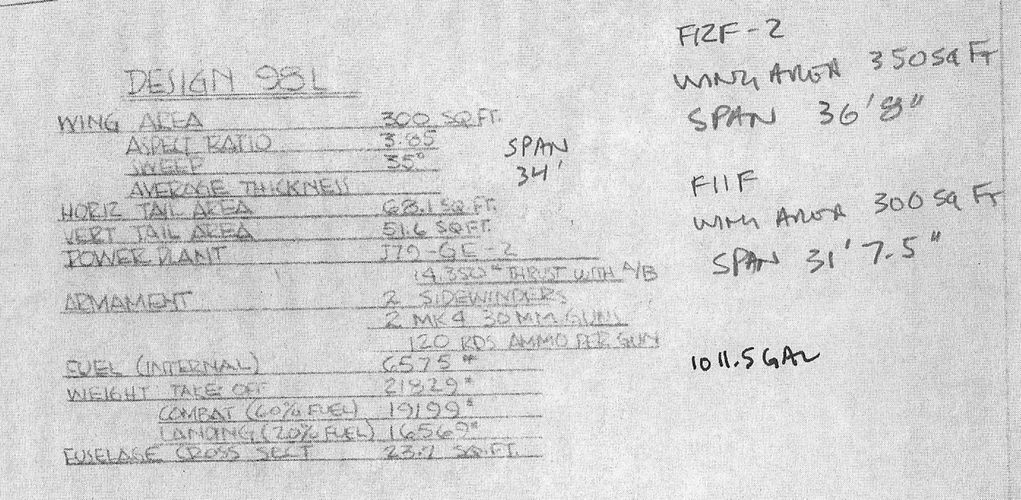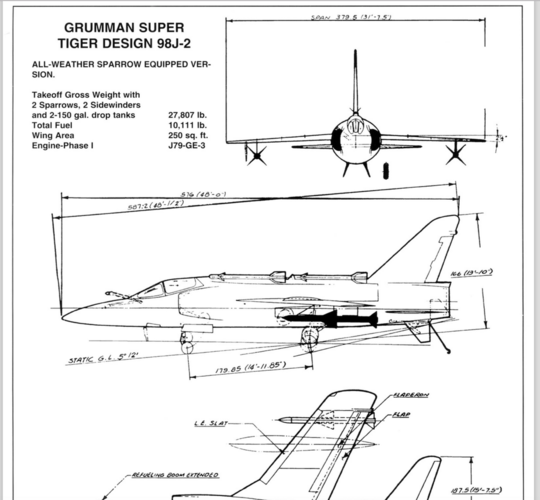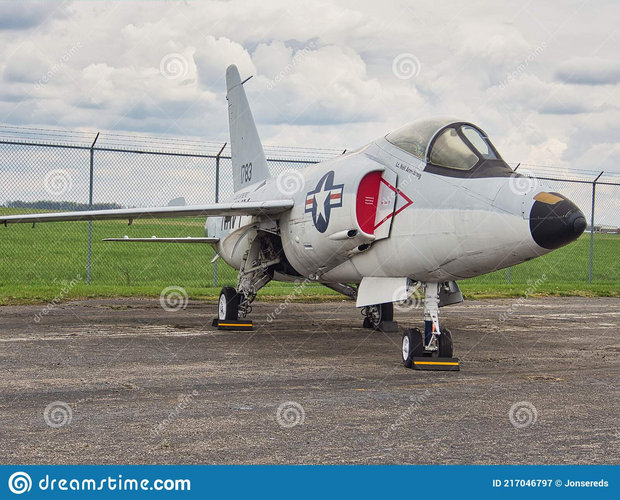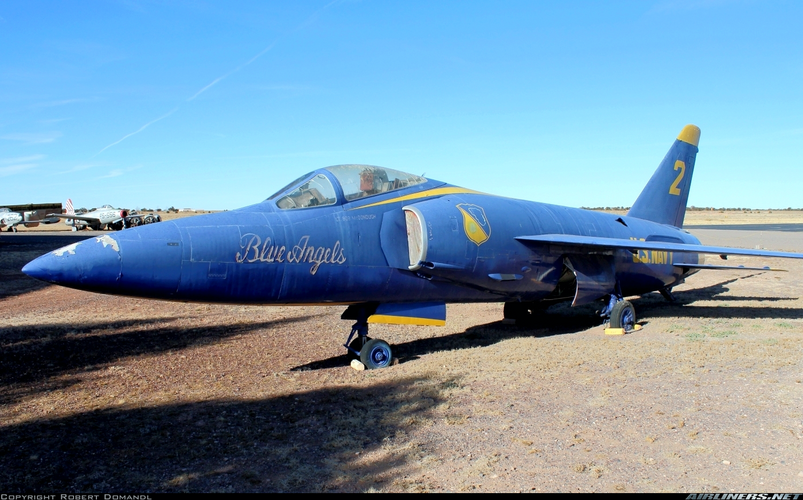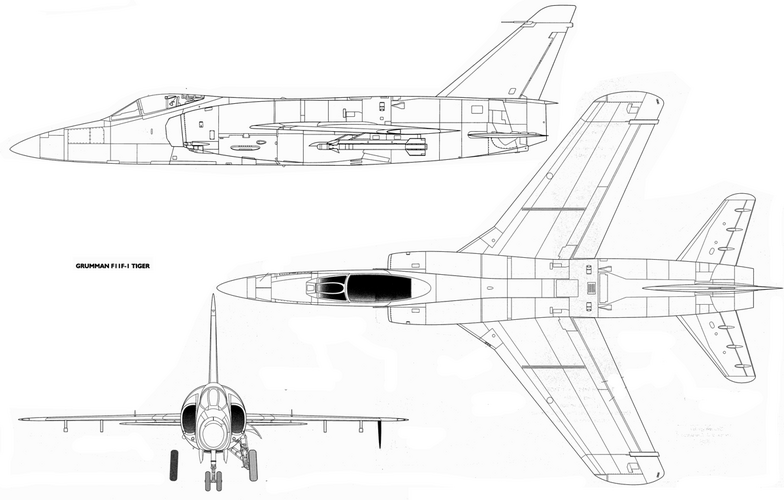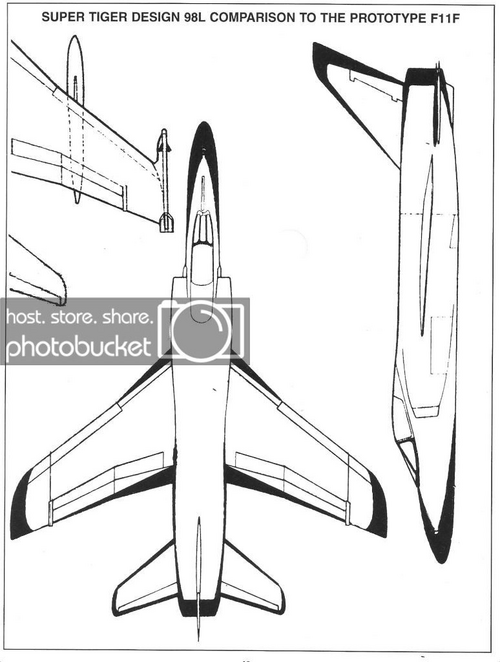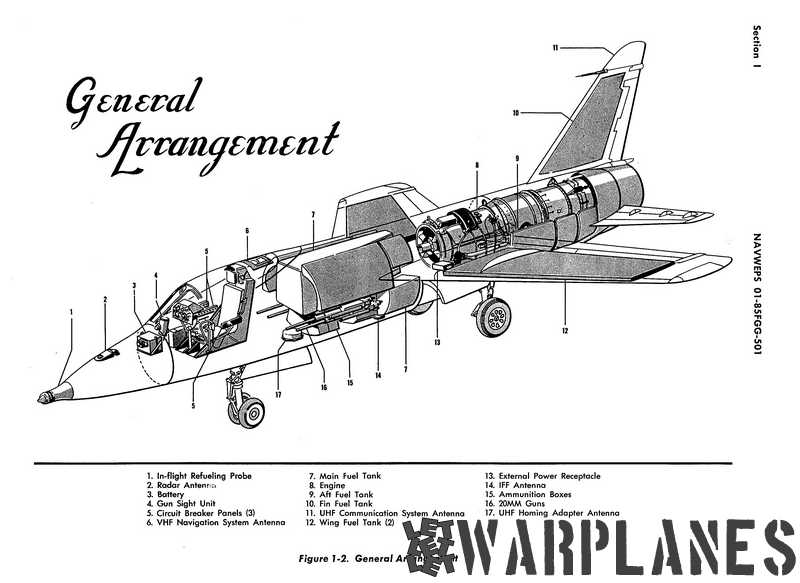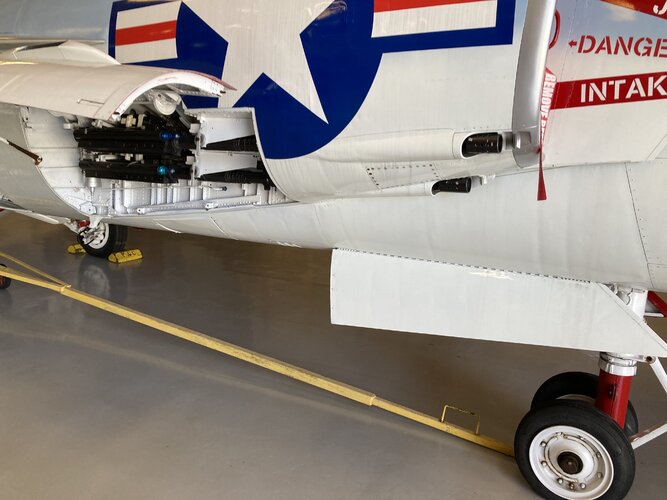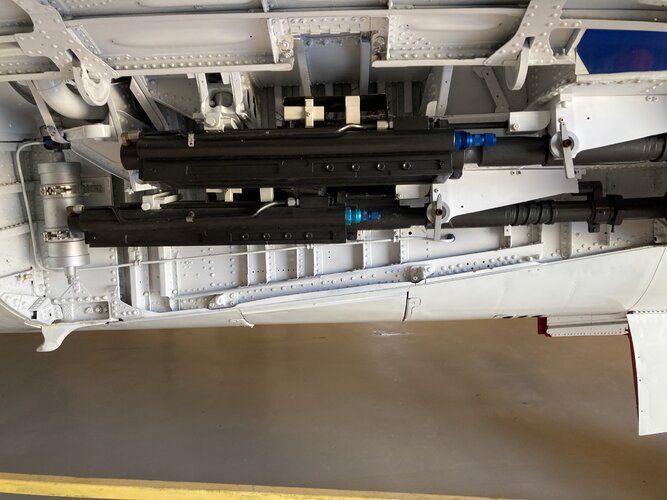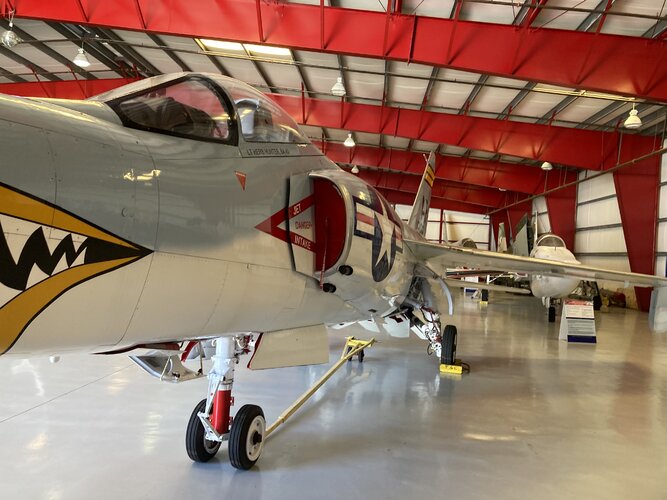which is still pretty amazing for the 250 sqft wing ST. If I understand you figures the number I have to work with is 25400? So at 250 sqft. that is a wing loading of 101.2.. that drops to 82.65 at 310 sqft. with the additional weight from the wing factored in and 75.84 at 340 with the wing weight added in. IIRC the A-4 is launching with something like 77 but will have to check...So the all weather fighter with sparrows light launch weight:
from 27,800 lbs
-2000 drop tank fuel weight
-500 drop tanks
=25300 (8000 lbs fuel, fraction ~32 %)
Extrapolating stall speed ~ 137 kts
Minimum safety with an AB launch maybe 3 = 140kts
Deduct about 100 kts from the H-8
= 40 kts wod
With 23k lbs maximum launch weight in zero natural wind, the Tiger would need a tanker around. Not unusual*, just a bit cumbersome.
* I've seen contradicting information, some say that USN practice is/was to top off launching aircraft from a tanker anyway.
EDIT: Checked at 20k and 272 wing area (listed in the linked source in a post) that is a rounded up 74, at 260 the stock wing area that is a rounded up 77. As is pointed out below not always a useful number but I have yet to find anything lifting off an H-8 with over that 77 or maybe 78..
Last edited:

